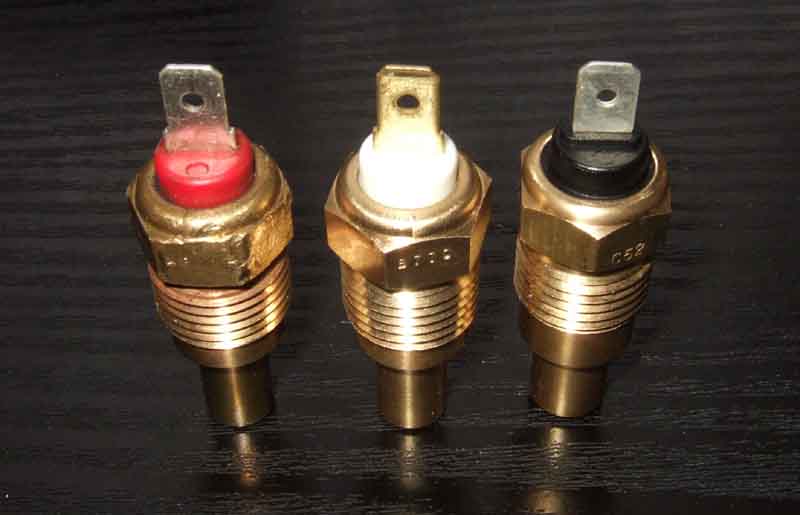KAC 456
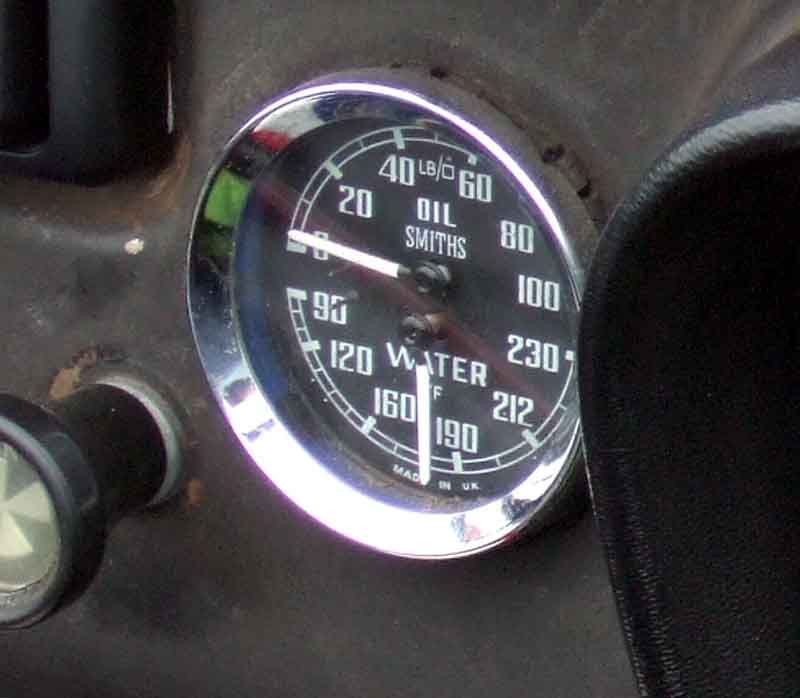
The following images are from Motaclan/Leacy MG:
Fahrenheit BHA4586, various markets up to October 1968
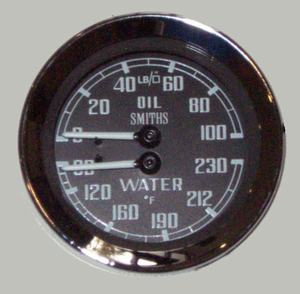
Centigrade BHA4587, various markets up to October 1968:
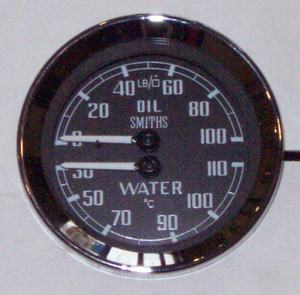
C-N-H BHA4900, used from October 1968 to August 76. Caerbont Automotive Instruments describes these Smiths gauges as '90-250F (30-120C)' whereas the earlier degrees C or F gauges show 90-230F and 30-110C:
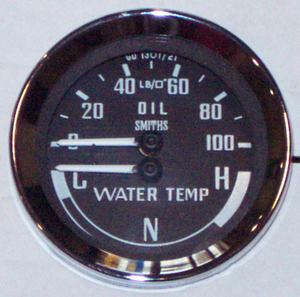
BHA4900Z after-market from Moss Europe - note the subtle differences to the above, and not the cheapest by a long way:
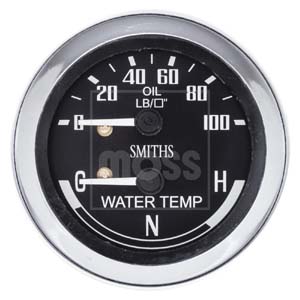
V8 60psi BHA5227 used up to June 1974. Clausager says a 100psi gauge was used briefly after June 1974, possibly the 4-cylinder gauge, although it may have also had the V8 red and white cross-hatching of the H zone. This isn't listed in the Parts Catalogue. Caerbont show the temp range as being 30-120 C (90-250F) i.e. the same as for the 4-cylinder C-N-H gauges:
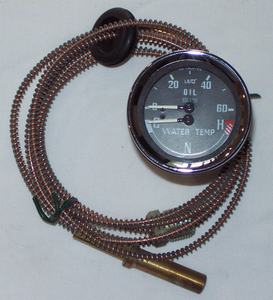
V8 80psi BHA5331 used after the 100psi gauge up to the end of production. Note the oil needle is angled up at rest and not horizontal like all the other gauges:
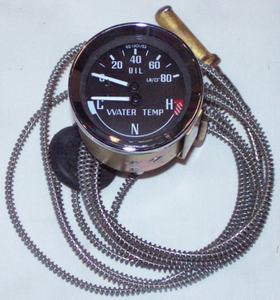
For completeness, the later electric single C---H gauge, used from August 77 on. Presumably the 'N' was dropped in a failed attempt to prevent owners getting paranoid about the range of and variation in 'normal' temperatures:

And the 77 and later oil pressure gauge:
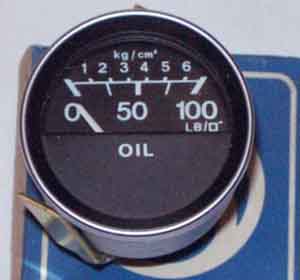
The capillary sender - 'A' is the bulb that projects into the coolant under the thermostat. 'B' is the tapered seat on the flange that butts against the head. 'C' are the flat faces on the back of the sender flange and on the nut, the nut presses against the flange which presses the tapered side into the head to form a seal:
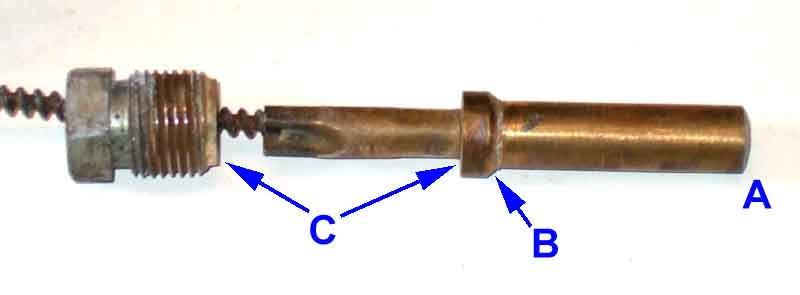
The temp gauge bulb projecting into the space below the thermostat. If the bulb won't pull out from the head the cover and stat can be removed to allow you to push it out using a bit more force. The orange looks awful but is just a thin film that wipes off, not sludge:
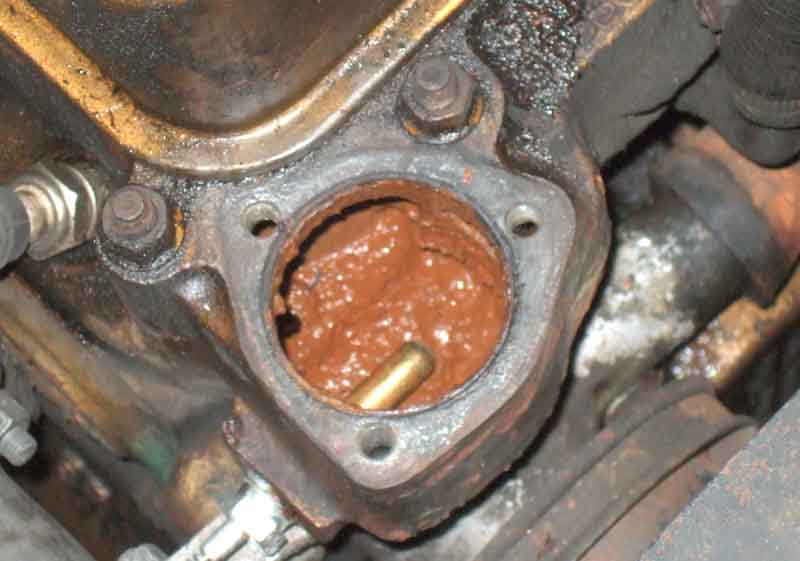
Carefully wind the excess capillary tube into three loops by the heater motor - not by twisting but as if it were flat strip, clip the tube under the oil gauge connector: (MGE)
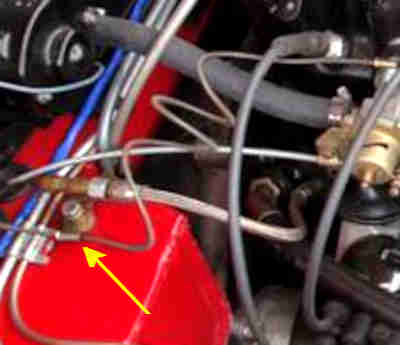
I would not advise taping the loops together for 'neatness' as that reduces its ability to absorb engine movement. Keep the loops up by the heater so they don't get wrapped round the steering column (as happened to someone recently) and clear of the oil cooler hoses so it doesn't chafe through them (as happened to someone else ...).
Another clip at the lower heater valve bolt (avoiding proximity to the spark plugs and risk of damage when working on them):
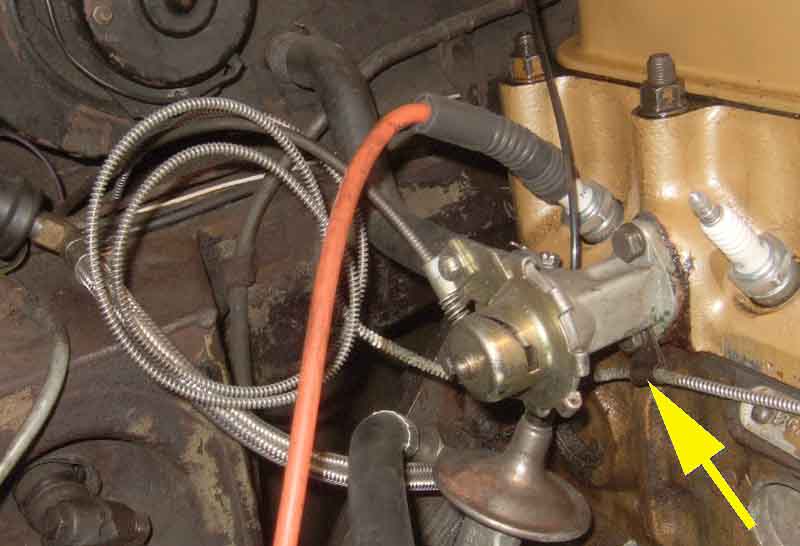
Make a graceful curve into the head:
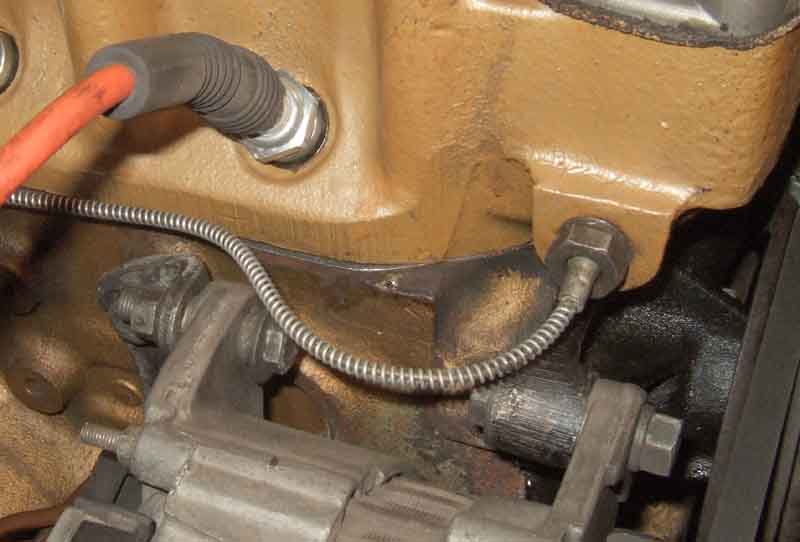
V8: A longer run to the front of the inlet manifold:
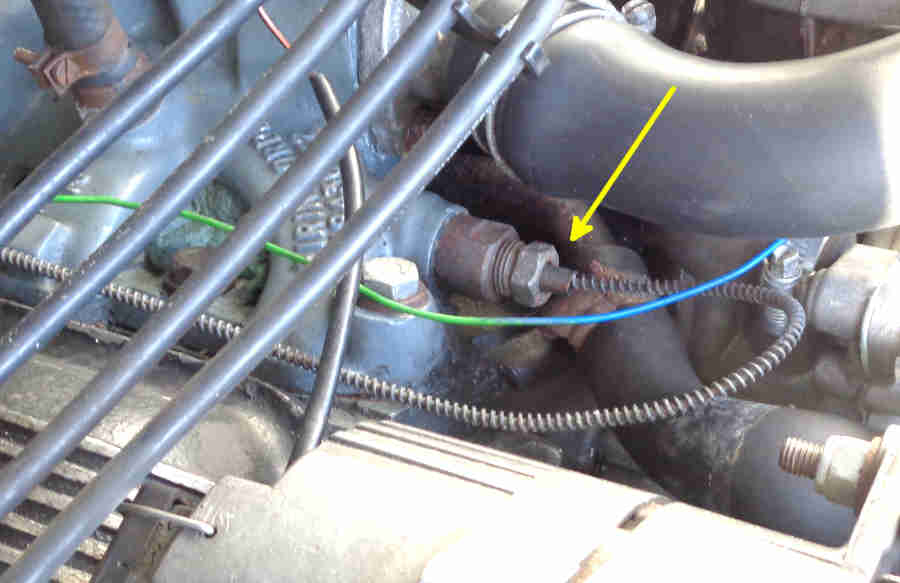
Support clips under the rocker cover screws:
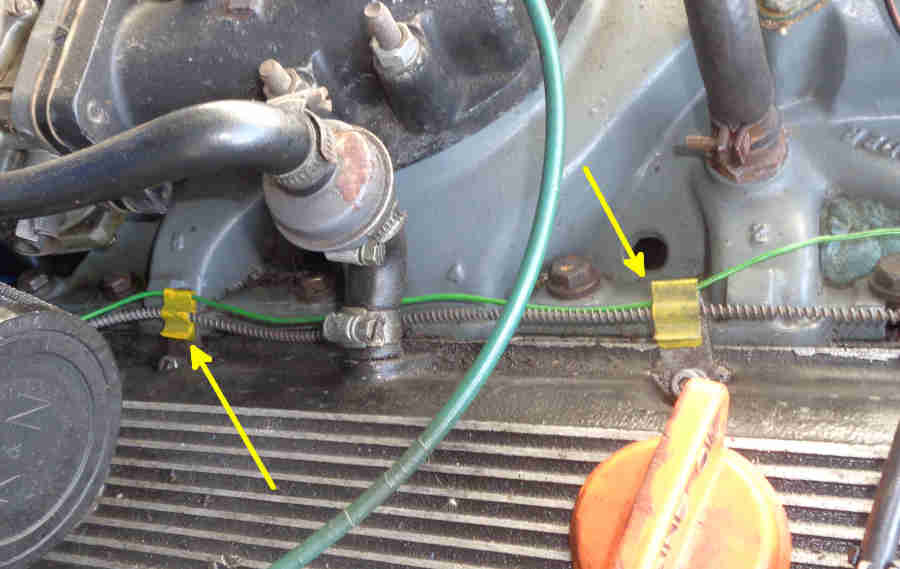
And through the bulkhead with surplus coiled in the same place as the 4-cylinder:
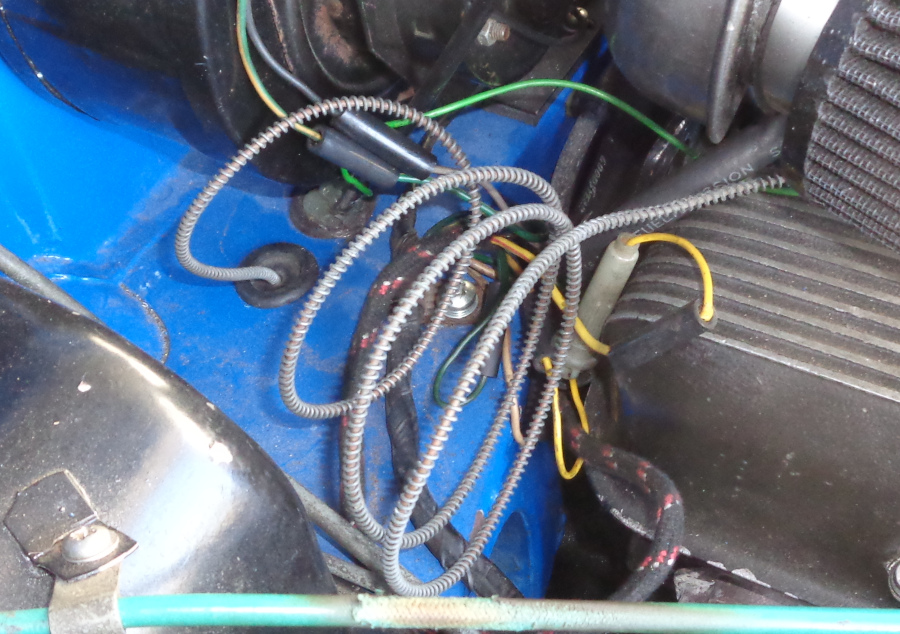
In the cabin the capillary has a P-clip in the same position as the 4-cylinder CB oil pipe, even on the RB (CB capillaries don't seem to have a clip in the cabin):
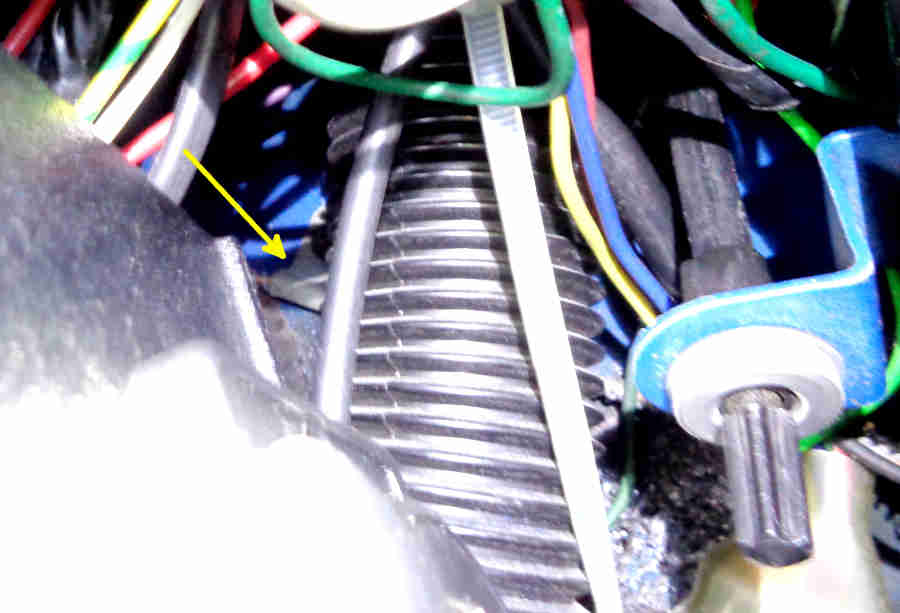
Difficult to picture hence this of a CB oil pipe clip (LHD but RHD are the same):
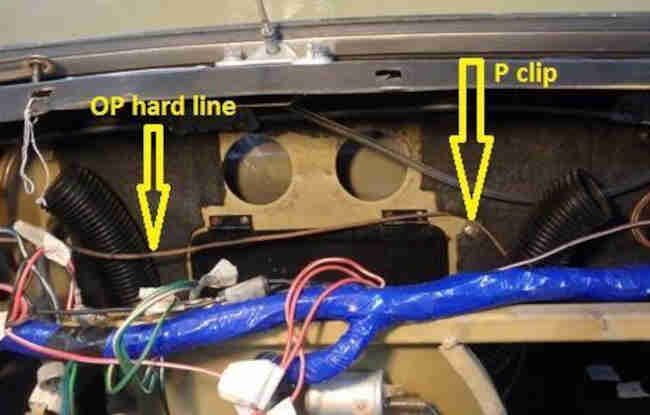
Typical electric temp gauge senders, black was used for 1977 and later cars, red before that but it only applies to North American spec. Other colours e.g. the white shown were used for different models and marques:
